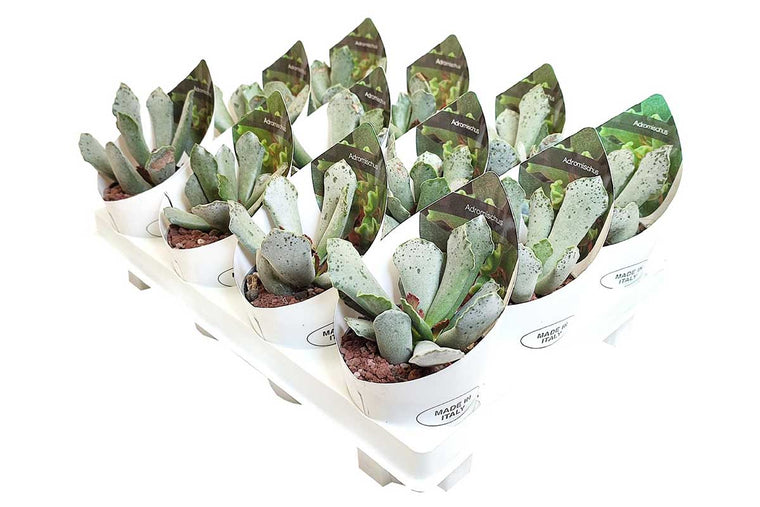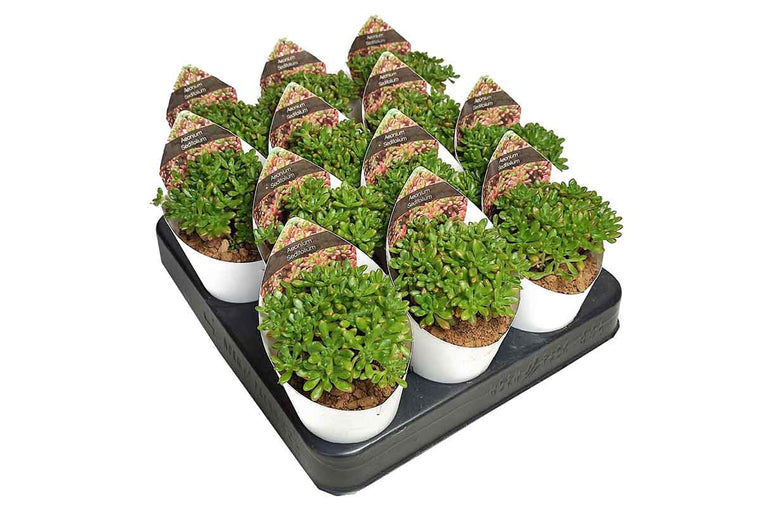Echeveria nodulosa 6.5cm
-20%
Echeveria nodulosa (Baker) Otto - Ετσεβέρια
Συνώνυμα: Cotyledon nodulosa Baker, Echeveria discolor, Echeveria misteca
Οικογένεια: Crassulaceae
Διάμετρος γλάστρας:6.5εκ.
Εντυπωσιακή ποικιλία Ετσεβέριας που σχηματίζει ροζέτες διαμέτρου 12εκ, με φύλλα χυμώδη, χρώματος λαδί και με έντονους κόκκινους χρωματισμούς τόσο στην περιφέρεια τους όσο και στο κέντρο τους.
Σχηματίζει μια μεγάλη κεντρική ροζέτα που περιβάλλεται από πολλά μικρότερα φυτά στη βάση του (offsets). Για θέσεις με ήλιο ή ημισκιά, αν και χρειάζεται προστασία σε μέρη με πολύ ζεστό καλοκαιρινό ήλιο. Ιδανικό φυτό για βραχόκηπους καθώς και για συνθέσεις με άλλα παχύφυτα σε διακοσμητικές γλάστρες.
Καταγωγή: Μεξικό.
English
It is a very particular succulent with an easily recognizable appearance, consisting of a single straight woody stem that makes it look like a tree, which does not exceed 20 centimeters in height. At the apex of the stem a graceful rosette is formed, consisting of obovate and concave leaves, with a slight tip, of a greenish-gray color enriched by deep streaks and very intense purplish-red margins. These characteristic shades give it the common name of "Echeveria dipinta", while the name of the species refers to the texture of its stem. In summer this succulent, already so captivating, becomes truly unique with the contrast of its shades mixed with yellow and reddish colors of the flowers..
Care
- It requires a lot of light throughout the year, however, avoid direct sunlight especially during the hottest hours of the day.
- It is preferable to keep it at mild temperatures and never below 10 °C, for this reason it is recommended to shelter it during the winter period.
- Water moderately and only when the soil is completely dry. It is enough to water it once a week in spring and summer, reduce it to once every two months in autumn and to suspend it completely in winter.
- The best soil is a well draining one, for example formed by a mix of peat and pumice so that water does not stagnate.
- They do not need frequent fertilization, it is sufficient to dilute the fertilizer with watering once a year.
Αποστολή
Με Acs












